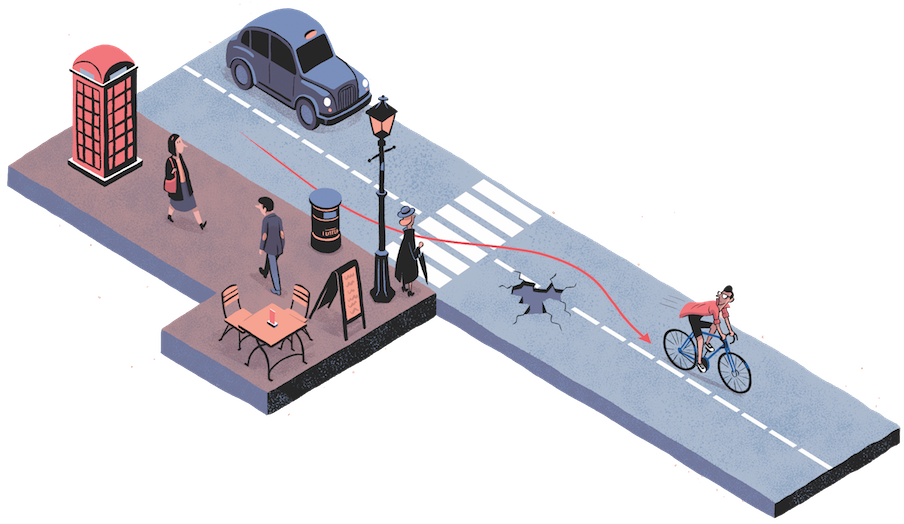 Many bicyclists think the City of Philadelphia (and other municipalities) is immune from lawsuits. While this is generally true, the City can be sued for bicycle crashes caused by potholes or other defects in the street. 42 Pa.C.S.A. §§ 8542, 8255.
Many bicyclists think the City of Philadelphia (and other municipalities) is immune from lawsuits. While this is generally true, the City can be sued for bicycle crashes caused by potholes or other defects in the street. 42 Pa.C.S.A. §§ 8542, 8255.
In order to win a pothole case, the bicyclist must prove that the City had "constructive" or "actual" notice of the pothole before the bicyclist's crash. See, e.g., Mason v. City of Allentown, 2013 Pa. Dist. & Cnty. Dec. LEXIS 443 (Pa. C.P. 2013).
Constructive notice means the City was not actually aware of a pothole before the crash, but should have been aware of the pothole. Had the City been acting with reasonable diligence, moreover, then the pothole would have been discovered and corrected . The longer the pothole existed before the crash, the more likely the City will be found liable through constructive notice.
But how does a bicyclist prove the age of a pothole? And how does a bicyclist prove the existence of a pothole once it's paved over?
I previously wrote about Pennsylvania's “Right to Know Law” (or “Open Records Law”), 65 P.S. §§ 67.101, et seq., and how bicyclists can submit information requests to determine whether roadwork was performed in the area of a pothole. Right to Know requests can also be used to determine if the City received prior complaints about a pothole.
Google Maps is another powerful tool, particularly Google's "time machine" feature.
In most cities, Google Street View cars will photograph the same roadway once every few years. In addition to capturing bizarre glimpses of everyday life, these photographs often capture potholes and other roadway defects.
Here's a pothole - in a bicycle lane - that injured one of my clients last month:
 |
| Taken on May 25, 2018 |
 |
| Taken on May 25, 2018 |
That same pothole is depicted on Google Maps, which also shows the pothole's progression:
 |
| From July 2017, Showing the Pothole for the First Time |
 |
| From November 2017, Again Showing the Pothole |
The first Google Maps image shows roadwork in October 2016 where the pothole would eventually develop. The next two images establish that the pothole existed as far back as July 2017. My client's accident happened nearly ten months after that.
Thanks to Google Maps, it should be a breeze charging the City with constructive notice.
If your injuries were caused by a pothole or defect in the street, you should contact an attorney at PHILLY BIKE LAWYER - all consultations are free, just call (267) 423-4464. Call now or submit an inquiry here. You have six months from your bicycle accident to file your pothole claim with the City.




























